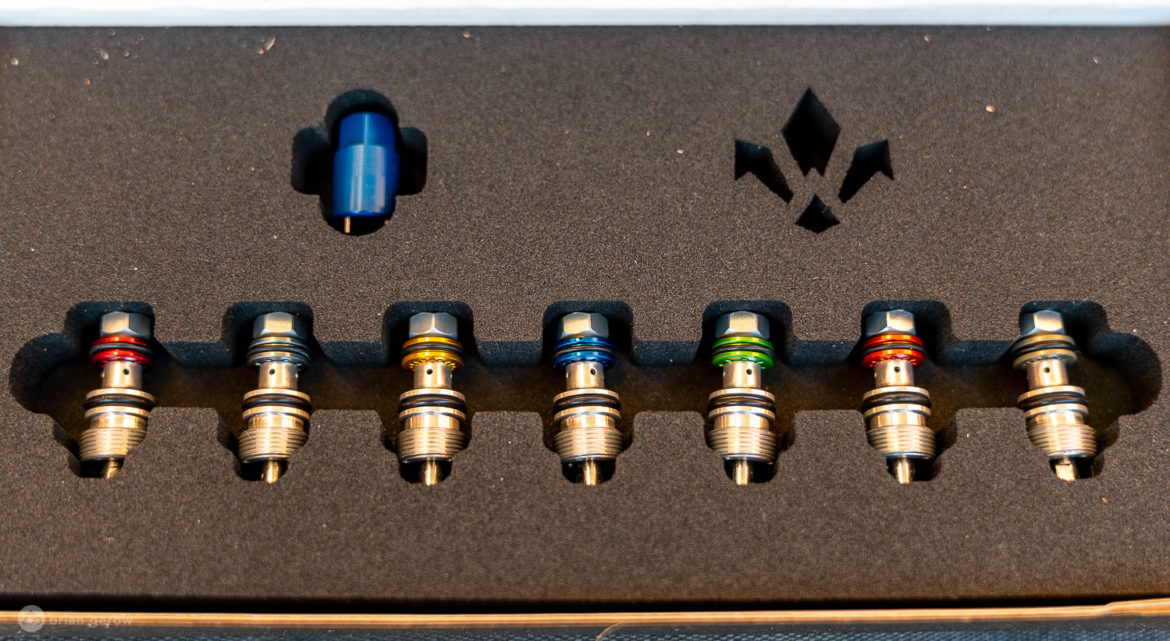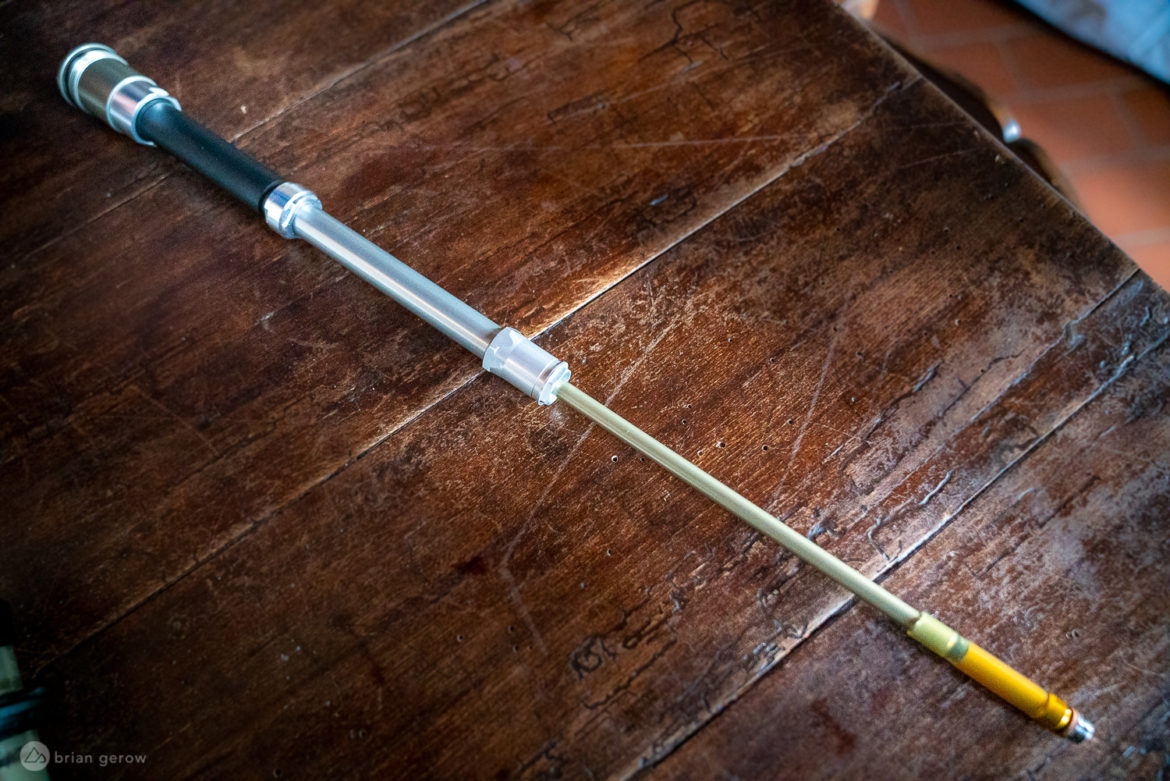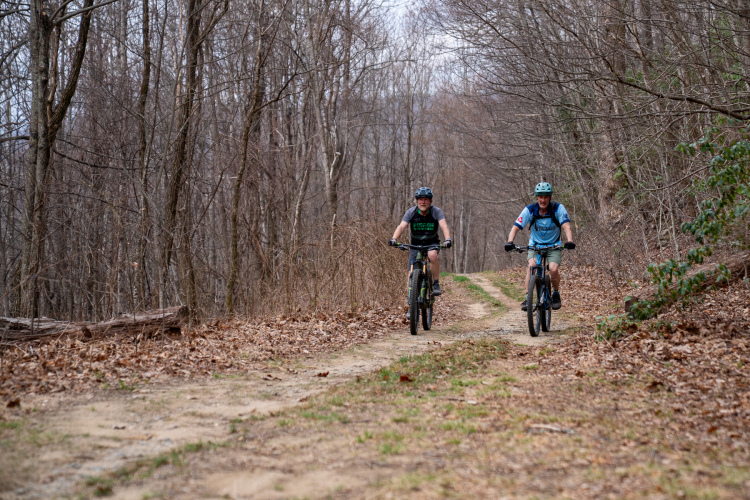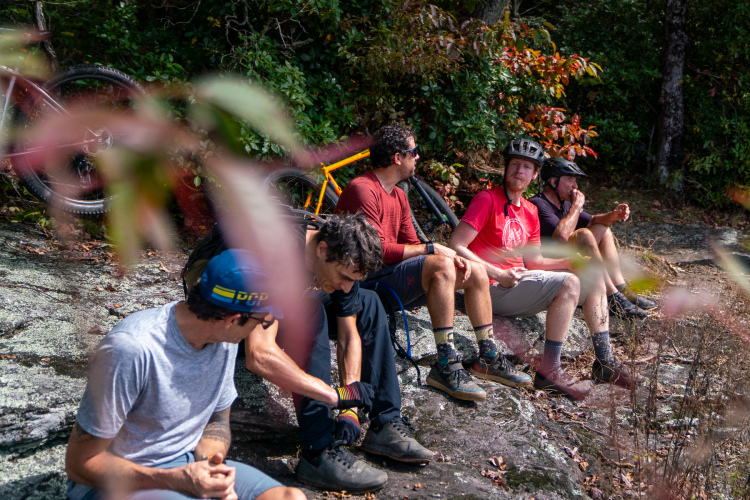
As our skills and speed progress with each mountain biking season, often the bikes and components we ride need to shift in lockstep. Formula has considered the evolution of riding styles, capabilities, terrain makeup, support needs, and evolving rider preferences with their top-shelf Selva R air fork.
Their innovative CTS tuning system allows Selva R owners to swap the compression tune in their fork in a matter of minutes, with tools that most beginner mechanics have laying around. With any other fork brand, this process requires shipping your fork to a certified service center and waiting a week or two to get it back. Then you have to test the new tune to see if you dig it, and send it back if you don’t.
The CTS system is one of several unique elements inside the Selva R and I had the chance to squish around on one over the past few months. Check out the deeper details and ride report below.
The micro-adjustable air spring

Formula’s 2Air Technology system allows riders to adjust the positive and negative air pressure to better suit their trails and riding style, whereas many other forks balance air chamber pressures with an internal transfer port that foregoes user adjustability.
Setting up the Selva R air spring is as easy as any other dual-air fork, and the company has a number of helpful videos available to guide folks through the process. Simply read the suggested air pressures on the fork decal, inflate the main (silver) chamber according to your weight and riding style, flip the damper lockout closed, then inflate the negative chamber with roughly 20psi more than the positive, and finally reopen the lockout. With this base setting, riders can adjust the negative chamber pressure, adding 1-5 PSI to make the fork more supple or releasing a few PSI to give it a more supportive feel in the first few centimeters of its travel.
The Selva R is the first fork I have tested where the suggested air pressure numbers on the left leg were quite close to what I ended up riding on the trail. Most often, I have to add 10-15 PSI to what the manufacturer recommends to reach the desired feel. With this fork, I only shifted the numbers slightly to reach prime Goldilocks performance. With those other forks, I am typically depending on higher air pressure to add support, leaving the compression knobs fairly close to the open position. But the compression system on the Selva R is so acutely customizable that there’s no need to over-inflate it.

With the sag set and the beginning of the stroke dialed, it’s time for volume spacers. The fork arrives with one installed, and after testing it with and without I have decided that one is the perfect number for my local trails. The brand’s spacers are called Neopos, which stands for “new-positive.” Unlike traditional volume spacers, the Neopos compress as the air compresses, providing a more linear and fluid feel even at the very end of the travel. There is a nice rock drop near my house where I go to test bottom-out support and sensitivity. Depending on where you choose to take off, the drop is 1-2 meters high, and while I am able to fully bottom-out the fork on the landing it doesn’t feel harsh or unmanageable through the end of the stroke.
| Price | Around €1,100, dealer dependant |
| Weight | 1980g |
| Travel for 27.5″ forks | Standard Version: 120-160mm (Internally adjsutable), Extended version: 170-180 (Internally adjustable) |
| Travel for 29″ forks | 130-160mm (Internally adjustable) |
| Stanchion diameter | 35mm |
| Offest | 46mm (27.5″), 46 or 51mm (29″) |
| Axle | 15mm (standard ) or 20mm (option) |
| Color | Black or Ultraviolet |
| Air adjustments | Neopos spacers, positive/negative pressure adjustability |
| Damper adjustments | Rebound: 21 clicks, Compression: 12 clicks, CTS tunes: 7 |
Selva R owners can convert their fork to coil with a simple kit from Formula that replaces the air spring with one of several coils. The air spring can later be reinstalled on the damper side and the damper inserted on the original air side. It’s not advisable to put the air spring back in the same left leg after running a coil, as the small scratches that the coil creates inside the stanchion will quickly wear out the air spring’s o-rings.
The tune happy damper

Instead of “thinking outside the box” when designing the compression circuit for the Selva R, Formula decided to put seven of them in a box. High-speed and low-speed compression circuits overlap, and having both knobs on the top of your fork leg only means that an engineer decided these knobs separately affect the frequencies that they have deemed high or low-speed. Formula approached compression from a different angle, allowing riders to swap the tune (similar to changing the shim stack) in their fork to fit their riding style, and click in more or less of that compression as desired. Changing valves takes a matter of minutes, and is clearly explained in Formula’s video tutorial.


The axle handle can be removed and reinserted in whatever position you desire. It can also be used to tighten or loosen the rear axle. 
The fork has three adjustment knobs atop the damper leg, including the CTS compression knob, the lockout, and the lockout threshold. The CTS is the important one, providing the compression tuning riders will need when the lockout is open. The lockout threshold knob changes the amount that the lockout switch closes or blocks the system. With the fork dialed to my preferred settings, I haven’t needed to use the lockout nor its requisite threshold knob, but if you dig strong lockouts this one goes fully rigid.

The Selva R damper shaft. 
One cute little CTS “race” valve, fashioned from a robot’s ear.
I have tried nearly all seven of the seven CTS valves, and the Red and Blue options are my current favorites. The fork comes with the Gold valve installed that Formula says is the closest to what you would find in their competitors’ stock forks. I’d say that their description is spot on, as it made the fork feel supple and supportive in all of the usual ways.
I found myself winding the CTS knob fairly tight with the Gold valve installed, so I swapped it for the “comfort and support” tune of the Blue valve, which kept the fork higher in its travel, and I eventually swapped that for the additionally supportive Red “race” tune that has become my mainstay. Now I’ll dig into how all these tunes and adjustments feel on the trail.
The fork comes with a Gold valve installed and a Blue one in the box, along with the tool to swap it out. Additional CTS valves retail at around €50.
Trail time with the Selva R

Formula has the industry standard “off the shelf” fork tune dialed with their Gold CTS tune and a single Neopos spacer installed. For folks who want to tune their fork and forget about it, most of the work is done before the component is unwrapped. Simply cut the steerer tube, press the star nut, charge to the recommended pressure, and click up compression and return speeds. You’ll be stoked with its supple and supportive ride characteristics and properly stiff chassis. Conversely, true tinkerers can twist knobs and swap pressure all day long, as this fork can be reset to match every unique track you descend if that’s what you’re into.
Before actually riding it, my first impression of the Selva R was that it might be overly stiff or rough riding. It appeared to have a little more resistance when I pushed on it in the garage, and I wondered if it may need a few “break-in laps.” On the trail, that sensation disappeared as the fork came alive under the bars. It has every bit of the silky smooth sensitivity that you can find in other top-end race forks and can be tuned even further to the supple side by inflating the negative air chamber. The first few centimeters of travel soak up trail chatter and vibration with aplomb, providing all the grip my tires can handle.
As I switched to firmer tunes I expected the transition from that silky initial stroke to an increasingly supported mid stroke to be noticeable. Again, while compressing the fork in the garage it seemed to have a clear switch where the higher compression really kicked in, but on the trail, that transition point vanishes, and confidence-inspiring support shines brightly. The compression support ramps up at a consistent rate throughout the travel, riding the tricky suspension line between traction and support without sacrificing either.

With the whole system backed by a single Neopos spacer, I have yet to bottom out the fork when I wasn’t intentionally aiming to do so. My regular test loops consist of four, eight minute descents, with a handful of midsized jumps, steeper chutes, and hard compressions on the way down. At 69 kilograms (150lbs) I am not the heaviest rider, and I like to set up my fork so that there is always 1-2cm of emergency travel remaining at the end of these local runs. That way, if I mess up a landing on my lunch-loop, or go ride steeper and rougher trails and forget to add air and compression, I always have a small safety buffer. With one spacer, 70-75psi in the positive chamber, and about 95psi in the negative chamber, the fork feels like it has my back.
So the Selva R is silky supple and consistently supportive, but with 35mm stanchions, is it stiff enough for its intended enduro racing application? I would argue that it’s handily stiff enough for the roughest tracks you point it at, and I confirmed that suspicion with a few friends who are significantly heavier than I am. I didn’t experience any odd sensations with the fork flexing, nor tire rub in tight compressions, and it felt great in choppy high-speed corners where lateral flex can negatively affect the performance of lesser forks. For Athena-size folks or far harder-charging riders, there is a 20mm axle version of the Selva R that should add more rigidity.
Lastly, the damper has a wide rebound speed adjustment that will suit riders who primarily use their suspension to stay in the air, folks needing to slow it down for muddy-tech, and those of us in between.
Conclusion
An important note to mention for the Selva R is that Formula doesn’t make low end or budget products. They have this elite level race fork, a slightly simpler single-air version, and a coil version. Unlike other brands, they are focusing all of their energy and resources on creating the best suspension and braking products possible, and they have earned a spot among the top contenders. I have really appreciated the massive amount of adjustability and supportive feel of the fork, and I would recommend it to anyone looking for an adaptable performance upgrade.

Thanks to Formula for sending the Selva R along for testing and review.















0 Comments